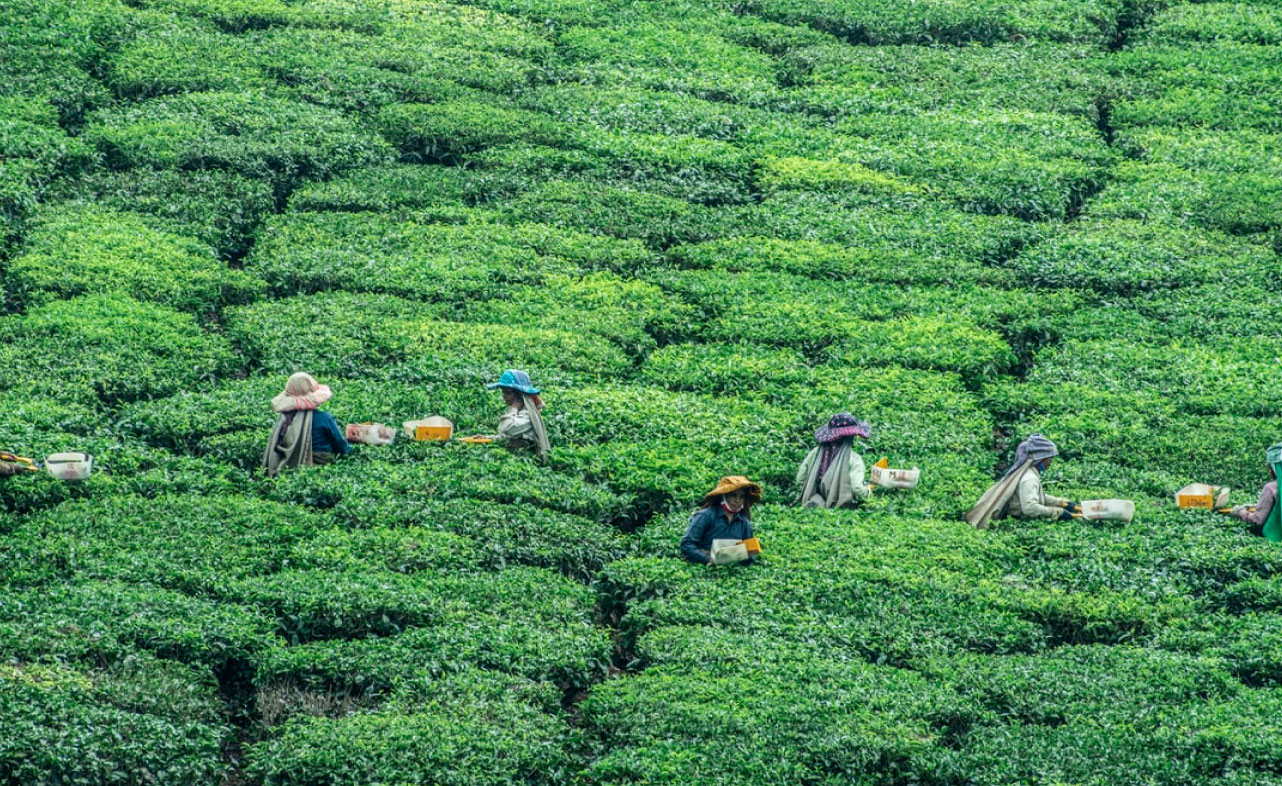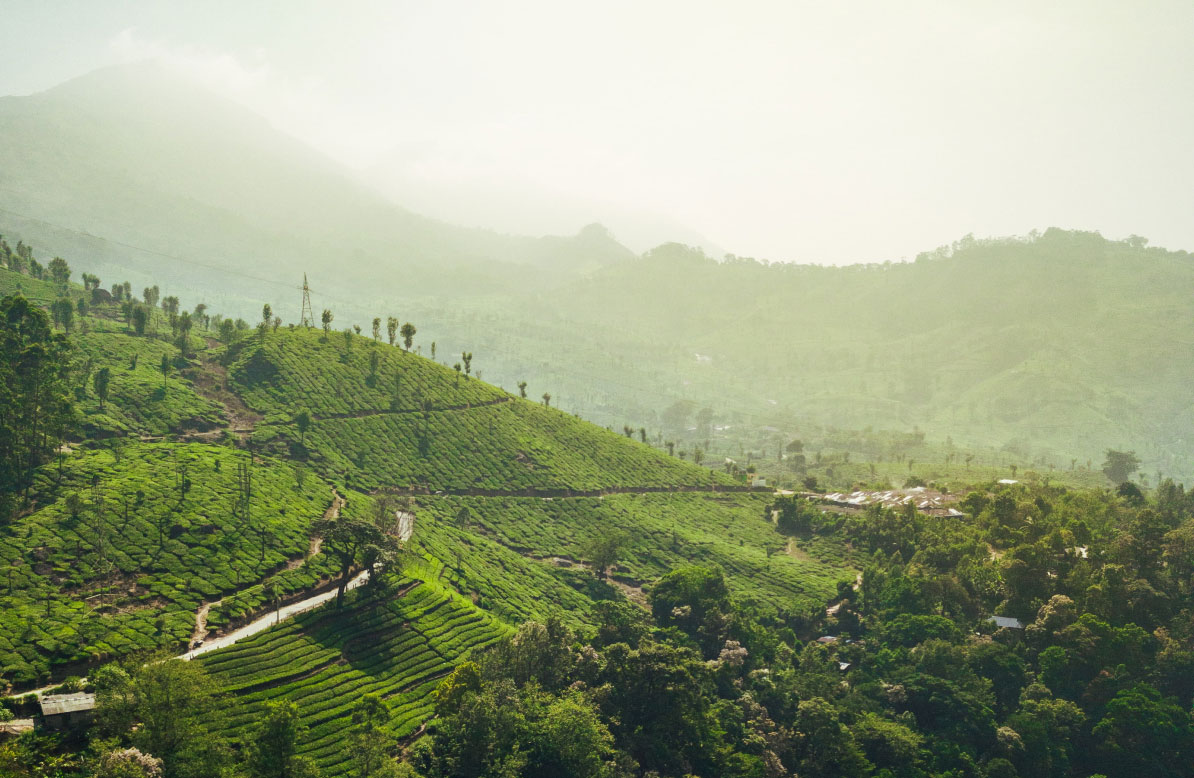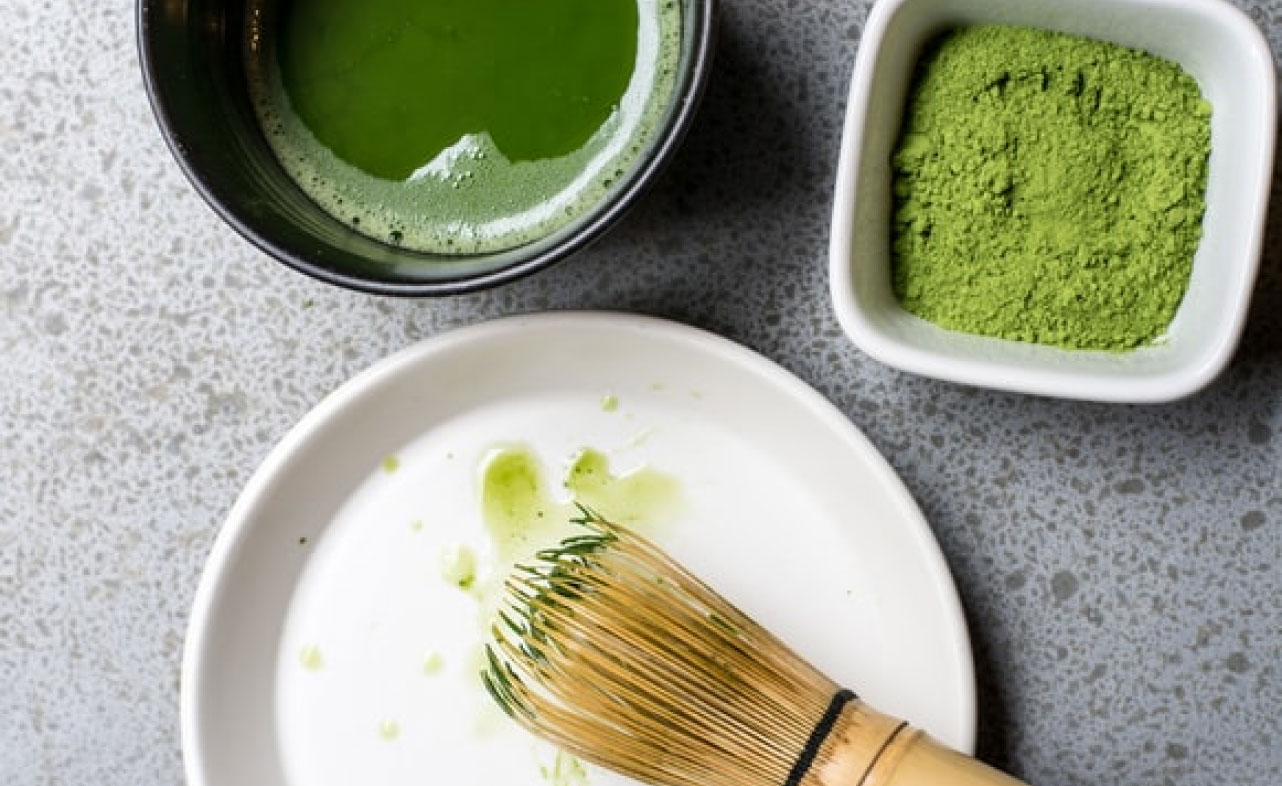INDIA
India is the world's largest producer of tea. The best known regions that produce tea are Assam, Nilgiri and Darjeeling. Assam is known for its powerful aroma and malty taste. The teas can carry milk and work well as morning teas. The Nilgiri region is known for its highly aromatic teas, which are also clear and fresh in taste. Nilgiri teas are strong, but not quite as strong as Assam teas.
Darjeeling teas are often referred to as the "champagne of teas". The teas are grown in the foothills of the Himalayas and are known for their highly aromatic and flowery leaves. The first picking in the spring is called "Darjeeling first flush". It gives teas with delicate, crisp and green flavor notes. The picking in summer is called "Darjeeling second flush" and is the primary picking in Darjeeling.
SRI LANKA
The island of Sri Lanka, formerly Ceylon, is the third largest tea producer in the world and the second largest exporter. The teas are grown at an altitude of 600 – 2,500 meters above sea level and are known for their incredible aroma and beautiful color in the cup. The finest teas come from the high altitude areas such as Kandy, Uva and Uva Highland.


CHINA
Tea production in China consists of many small farms. The teas are collected by large co-operatives that control quality, blend the tea and sell it directly on. Therefore, Chinese teas are rarely sold with their plantation name, such as in India. The soil conditions mean that there is generally very little tannic acid/tannin in Chinese teas. They therefore rarely become bitter.
KENYA
The first tea bush was planted in Kenya in 1903. Production has since increased so that today Kenya is one of the leading tea-producing countries in the world. Production takes place on many small farms, of which there are over 200,000 in Kenya. The teas are known for their fullness and good color. They are good as morning teas and also go well with milk.
JAPAN
Tea is a central part of Japanese culture. It is especially the green tea that is cultivated in the country, where it is included in both the traditional tea ceremonies and in the Japanese's everyday life - for meals and in time and out of time. The most common green teas in Japan are Sencha. Sencha is available in many grades and is known for having jade-green, needle-like leaves. The tea is clear and yellow-green in the cup with a grassy and sweet taste. The best Senchas are harvested from April to May.
The finest of the Japanese teas is Gyokuro. It is the tea you serve to your guests. The tea bushes grow in the shade for part of the year and therefore grow slowly. This causes the leaves to produce more chlorophyll and thus become darker green in colour. In addition, less tannic acid is formed, so the taste becomes mild and sweet. The tea is picked only once a year. Gyokuro are also the tea leaves that form the basis of Matcha tea. Matcha tea consists of (extremely finely ground and) powdered Gyokuro tea leaves.




















